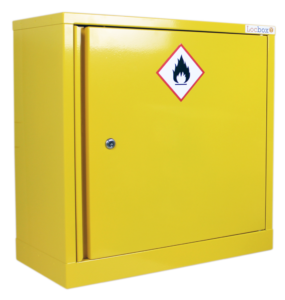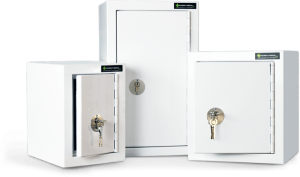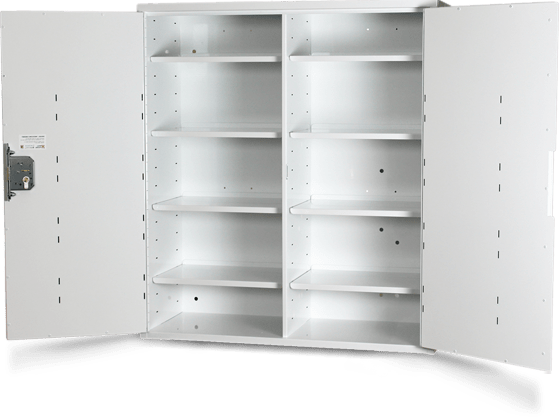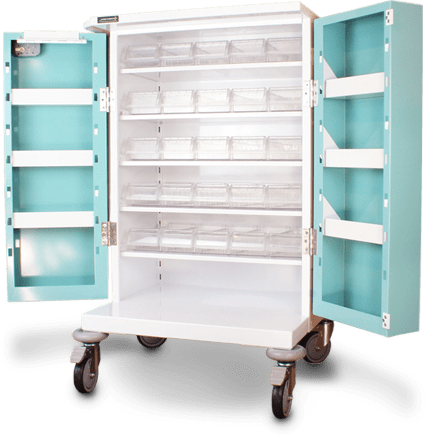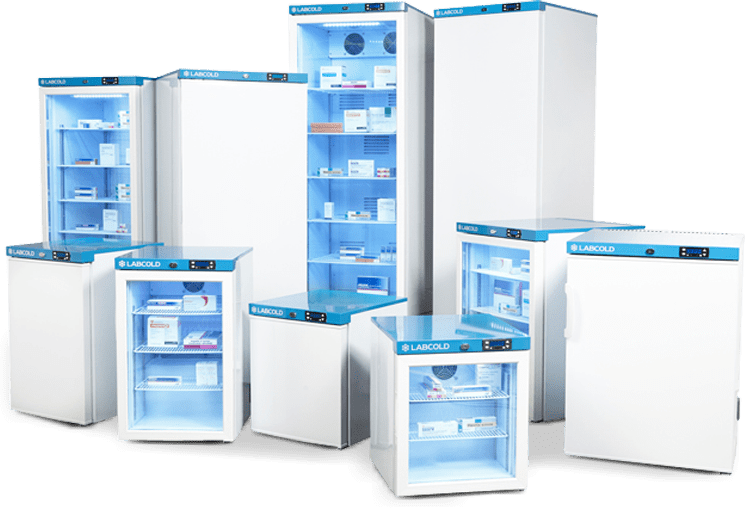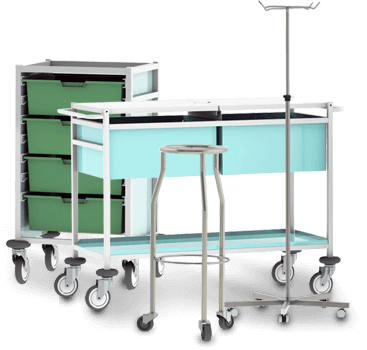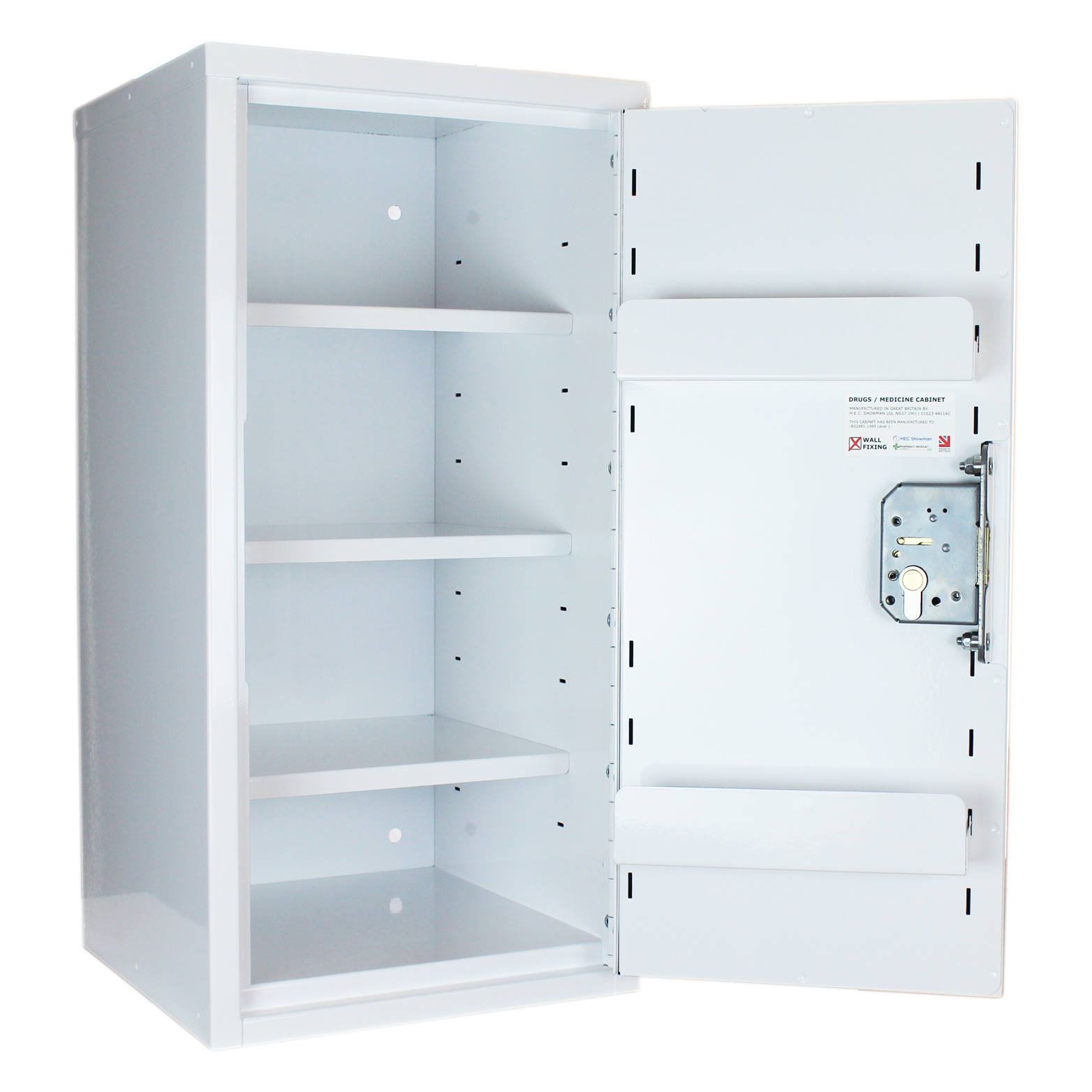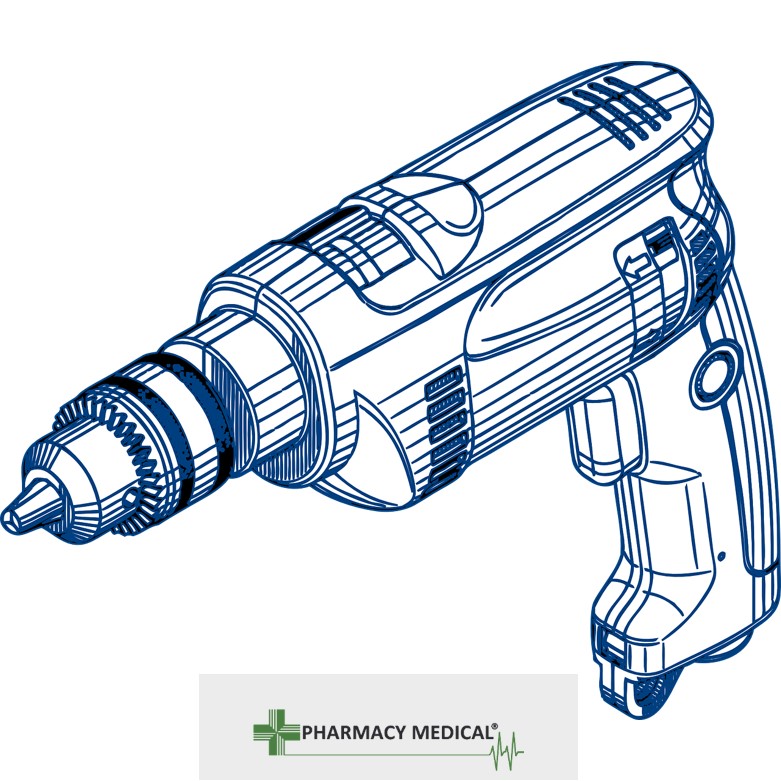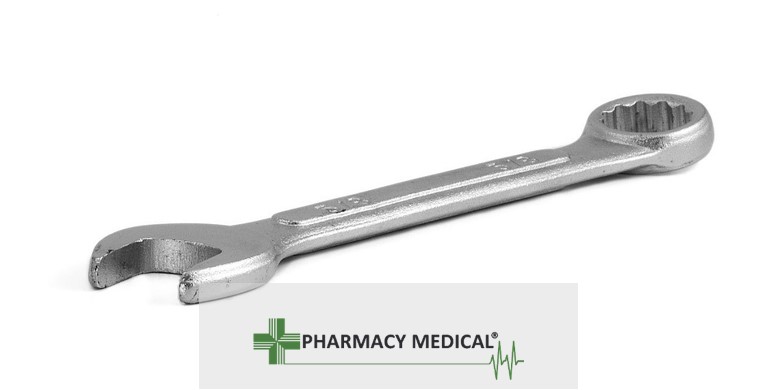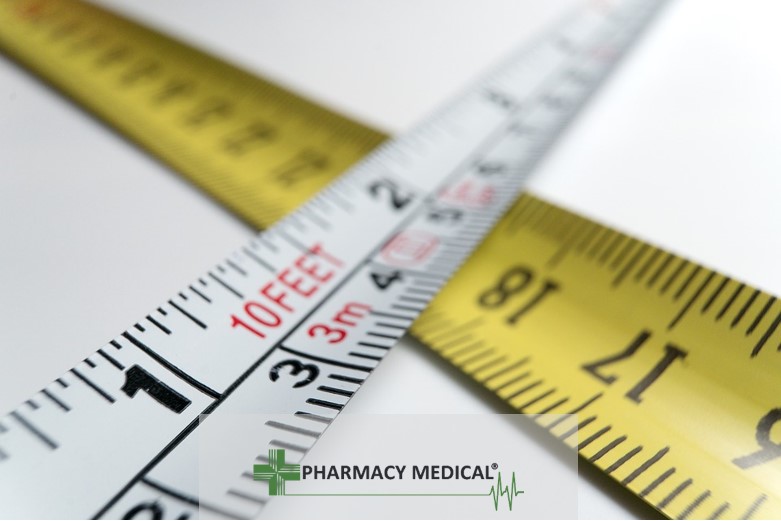What Type of Medicine Cabinet Do I Need?
First things first, we don’t manufacture your typical ‘medicine cabinet’, the ones you see on Amazon and other sites that say they are suitable for first aid supplies etc. All of our medicine cabinets, with the exception of our POD lockers, conform to BS2881:1989 level one, which is the standard for the storage of medicines in healthcare premises. If you need to store medicines in a cabinet to this standard, the cheap boxes available elsewhere, probably don’t meet the requirements – just a point to note.
All our available BS2881:1989 level 1 compliant cabinets are as follows:
Wall or Floor Fixing?
Our catalogue of medicine cabinets are all wall fixing as standard. That said, we can convert units for floor fixing upon request. Although we can, we have never been asked to do this fr medicine cabinets. Medicine cabinets are a lot lighter then CD cabinets and are generally fine secured to a solid wall.
How do I Fix My Cabinet?
Fixing our medicine cabinets follow, in essence, the same process as fixing our controlled drugs cabinets. It is a very simple process. Although the regulations don’t state that we must send the fixing bolts out with medicine cabinets, we’re nice and include them with your purchase. These are the same bolts that are used to secure our controlled drugs cabinets, and therefore the installation process is the same. Simply hold the cabinet in place, mark the holes positions in the back of the cabinet, remove the cabinet and drill the holes. Then when the holes are drilled, put the cabinet in place, insert the bolts and tighten them up, simple as that. Make sure that you check the position of the holes before you drill as they are quote large holes.
There is a more detailed fitting guide (for our controlled drugs cabinets) in the link below:
See more here.
Checking Sizes
This is probably the hardest part about buying a medicine cabinet, and one of the main reasons we made this medicine cabinet buying guide. Trying to check the sizes of a product you can’t see in front of you can be quite difficult. Therefore, we have created our measuring guide. This guide better explains how to interpret the sizes we put to our cabinets, so you can make a better educated decision. The guide provides a visual representation of the sizes on a stock CD cabinet. Although the guide is for a CD cabinet, the way we provide our sizes for medicine cabinets are the same, so the guide is still relevant. We strongly advise that you check the sizes of the cabinet you order before ordering. We also try to order our cabinets by volume, starting with the smallest. The volume can be seen on the main image, next to whether the cabinet is wall or floor fixing. Please read the guide on measuring your cabinet, a link to this is above. We also strongly advise measuring the space that your cabinet is intended to fit in, something that can often be overlooked. If you need any further information, please get in touch.



